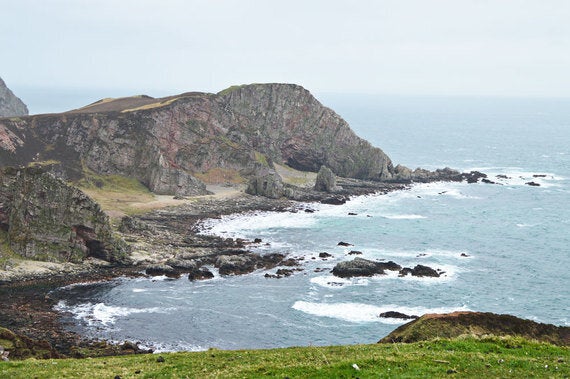When I think of gin culture, images of London old and new spring to mind. From the latest Shoreditch gin festivals and micro distilleries, to tawdry Victorian gin palaces and Hogarth's infamous Gin Lane. And of course the city has its own style, the classic London Dry. But as much as we Londoners like to think that we're at the centre of every significant trend to hit the UK, the truth is that gin production is thriving outside the capital. From south-coast distilleries such as Brighton Gin (distilled in the basement of the Urchin Pub in Hove) to a burgeoning number in Yorkshire, Liverpool and Scotland.

Photo credit: Victoria Ferran
Take for example the Langley distillery in the West Midlands. They don't make bottled gin for you and I to drink. They specialise in producing gin concentrates (including London Dry) which they then supply to over 80 different gin brands in the UK and abroad.
It may also surprise you to know that a whopping 70% of British gin is now produced in Scotland. From Edinburgh to Perth, over 70 new gin distilleries have opened in the last few years, capitalising on the recent gin boom. You can even do a tourist trail visiting Scottish gin distilleries. From Rock Rose near John O'Groats to The Botanist on the Isle of Islay in the Inner Hebrides. A magical island, beloved by many whisky aficionados around the world, since it's historically known for scotch.

Photo credit: Victoria Ferran
When I recently visited Islay, it had been six weeks since the last distillation but the copper pot still, named Ugly Betty, had a wonderful aroma of juniper, orange and coriander. It was made with local Octomore spring water and steeped in nine base botanicals. Then slowly infused with a tea bag or giant hessian sack stuffed with an additional 22 dried botanicals, hand-picked on the island by two local botanists.

Photo credit: Victoria Ferran
One great advantage to gin distilleries popping up all over the UK is the range of botanicals now being used. For example, Brighton Gin uses milk thistle, whilst Whittaker's gin in Yorkshire relies on whortleberries. The Botanist's sack includes Mugwort, Tansy, Gorse, Creeping Thistle and Hawthorn flowers. So you could say that craft gins are starting to acquire their own terroir (to borrow a phrase from the wine world). To me all wine tastes more or less the same, I've never had a sophisticated enough palate to understand wine. But with gin it's really noticeable - bartenders, or we at home, can really emphasise these flavours with a slice of grapefruit, vanilla pod, lavender or thyme, elevating the classic G&T to a thing of wonder.
On Islay, I discovered that gin production is having a positive impact on the local economy. The Bruichladdich distillery, who make Botanist gin alongside whisky, is creating job opportunities for islanders who are both proud of the local spirits and fiercely loyal. More widely, as distillers are transferring their knowledge of whisky-making to gin, Scottish gin has developed a no-nonsense charm of its own. As the Botanist's young production manager points out, the gin industry at the moment "is like the wild west, anyone can do anything." But they are sticking to their guns, rather than chasing trends. "For us Islay is the centre of the universe and everyone else revolves around what we do." And as demand for gin continues to rise, I hope we see more and more craft gins appearing around the UK that stand out from the crowd by using local skills and distinctive local ingredients.